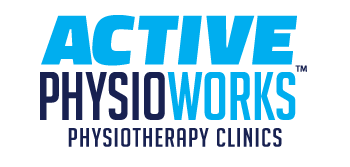Back to School: Tips for preventing backpack related pain
Aug 25, 2014
In the summer of 2014, I had the privilege of traveling to Europe with my wife. We were lucky to backpack throughout Italy and Croatia for one month which meant lots of walking, stairs, hills, and moving onto and off of trains, planes and ferries. With substantial loads on our shoulders, we soon recognized the importance of backpack safety in preventing shoulder, neck and back pain. This experience and a recent article posted by Physiotherapy Alberta gave me a reason to write about this topic. Unfortunately our summer is now coming to an end. With that our children will be returning to school and for parents that means back to school shopping for Spiderman and Dora the explorer backpacks. In this article we will discuss the importance of choosing and using backpacks to prevent related pain and associated postural dysfunction.
“Mommy, could you carry my backpack for me, my shoulder hurts?” Does this seem familiar? Reports of children having pain as a result of backpack use is highly prevalent and is not the only issue associated with misused, overloaded and poor fitting backpacks. Back, neck, shoulder pain, postural dysfunction, decreased reaction times and risks of fall are all issues that may result from improper backpack use. So when looking for a cool pack for when your children return to school in just over a week, give careful consideration to the following tips:
Choosing a backpack:
-the backpack should fit the child from the level of the shoulders to just above the buttock and should be no wider than the shoulders
-the shoulder straps should be wide and padded to help distribute weight, reduce pinching and ease neck tension
-look for backpacks with two components to allow weight distribution, padded back for comfort and hip belt to redistribute heavy backpacks away from the shoulders.
-avoid large backpacks at all costs, this prevents overloading
Using a backpack:
- A reasonable weight for children to carry to avoid pain and postural issues is 10-15% of your child’s body weight
- use BOTH shoulder straps to avoid asymmetrical loading of the spine, and ensure they are tightened so that the bottom edge of the pack sits just above the buttock
-use the hip belt to redistribute weight from the shoulders to the hips, especially in heavier packs
- show your children how to evenly distribute the contents of their pack by putting the heavier contents in the bottom, closer to the spine and with symmetry from side to side
-do not fling the backpack over your shoulder, use your strong leg muscles to lift the backpack to and from a table in a slow controlled manner
Other valuable tips:
-lighten the load by leaving unnecessary books/items at home or in the locker between days and classes
-with heavier loads consider rolling packs if your child’s school allows it, or carrying some items separate
-tell your child to let you know if they are experiencing issues with their pack
-seek a Physiotherapist to obtain back strengthening exercises for back pain prevention
How will you know if your children are using their packs correctly?
- Complaints of pain in shoulders, neck, back
-complaints of numbness/ tingling in arms or hands
-head forward posture, stumbling and hunching with use of their backpack
-red marks or creases on shoulders
-fatigue, heavy breathing, redness in face, slowing down would indicate an overloaded backpack
Although we have discussed the use of backpacks in children, the above information can be carried over to high school students, workers, cyclists, hikers and avid backpacker’s. If you have waited too long to read this blog and are already experiencing pain, or you have any questions regarding other methods to prevent school or work related injury/pain please contact us by calling 780-458-8505.
References:
(2014). Backpack safety. Physiotherapy Alberta. http://www.physiotherapyalberta.ca
Wagner, Denise. (2012). Backpacks: Beasts of Burden. Canadian Association of Occupational Therapists. http://www.caot.ca
Please add your bio info through your member profile page, or through your dashboard.

